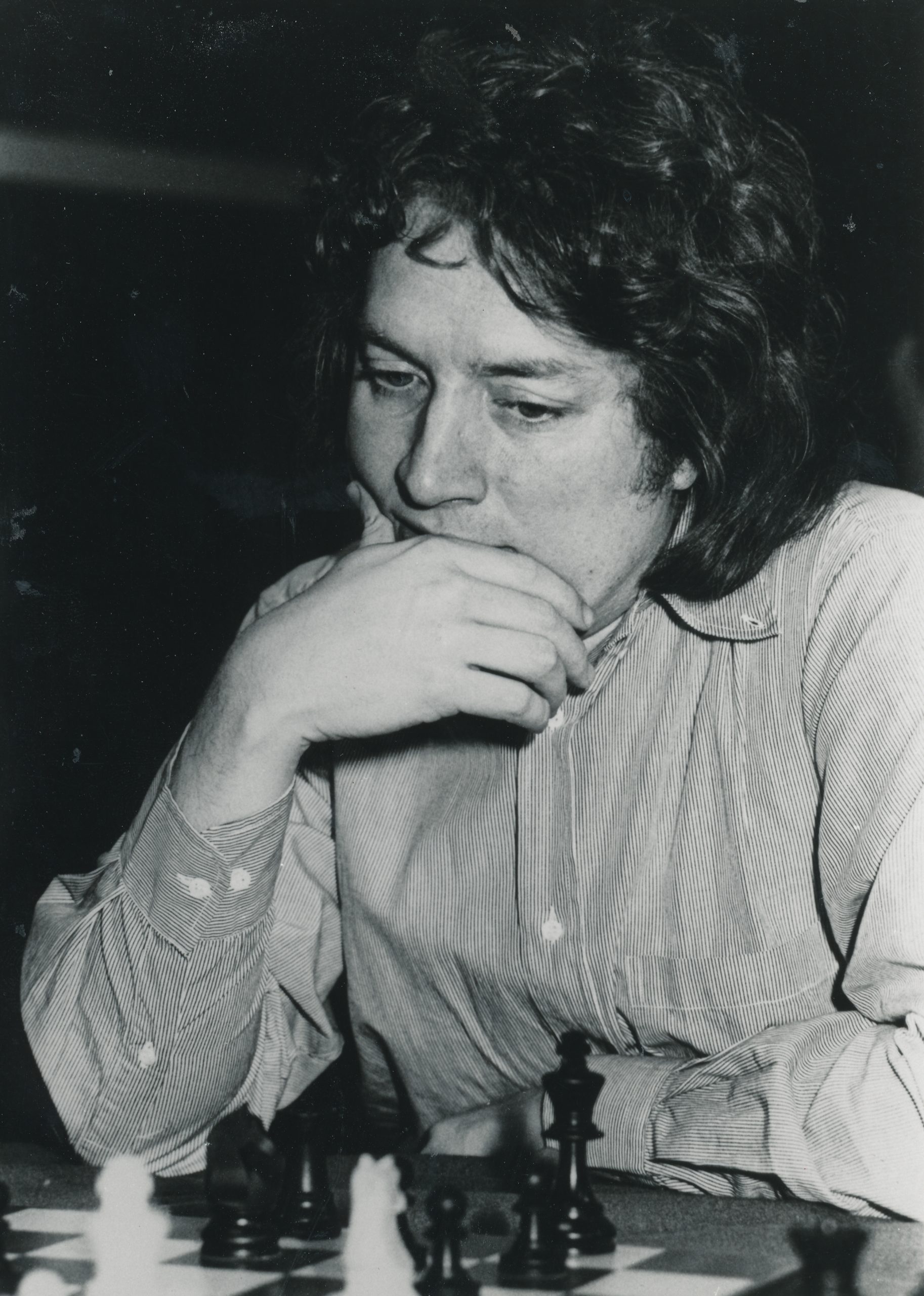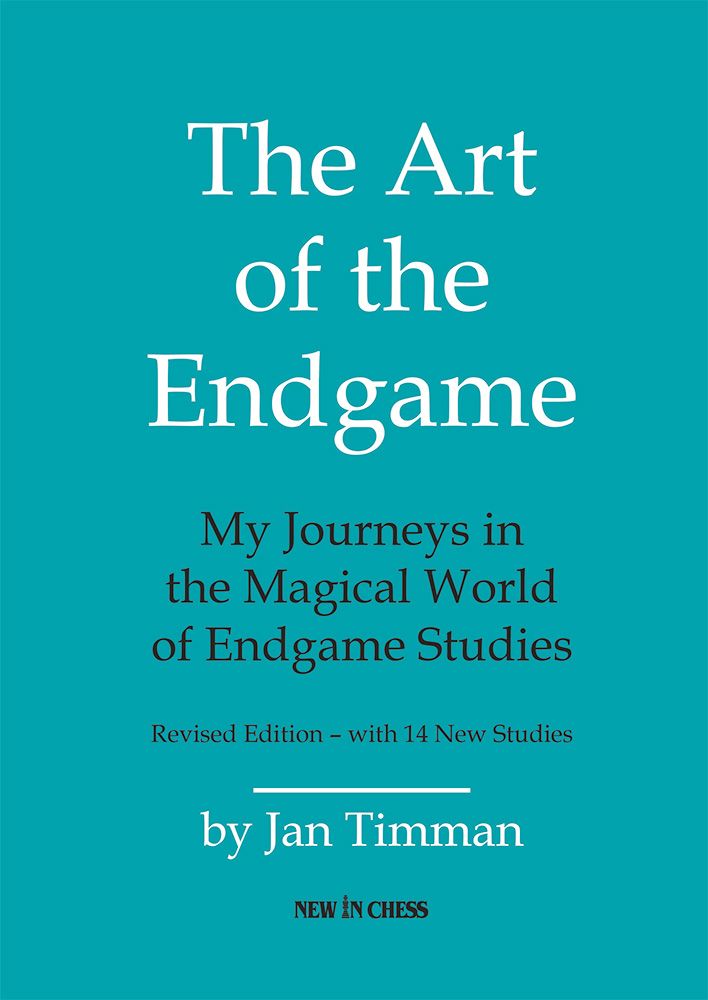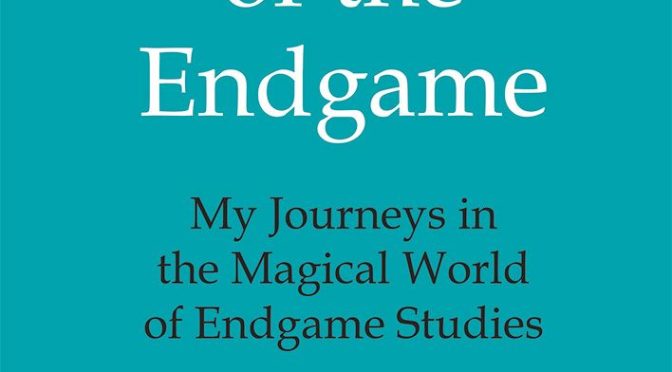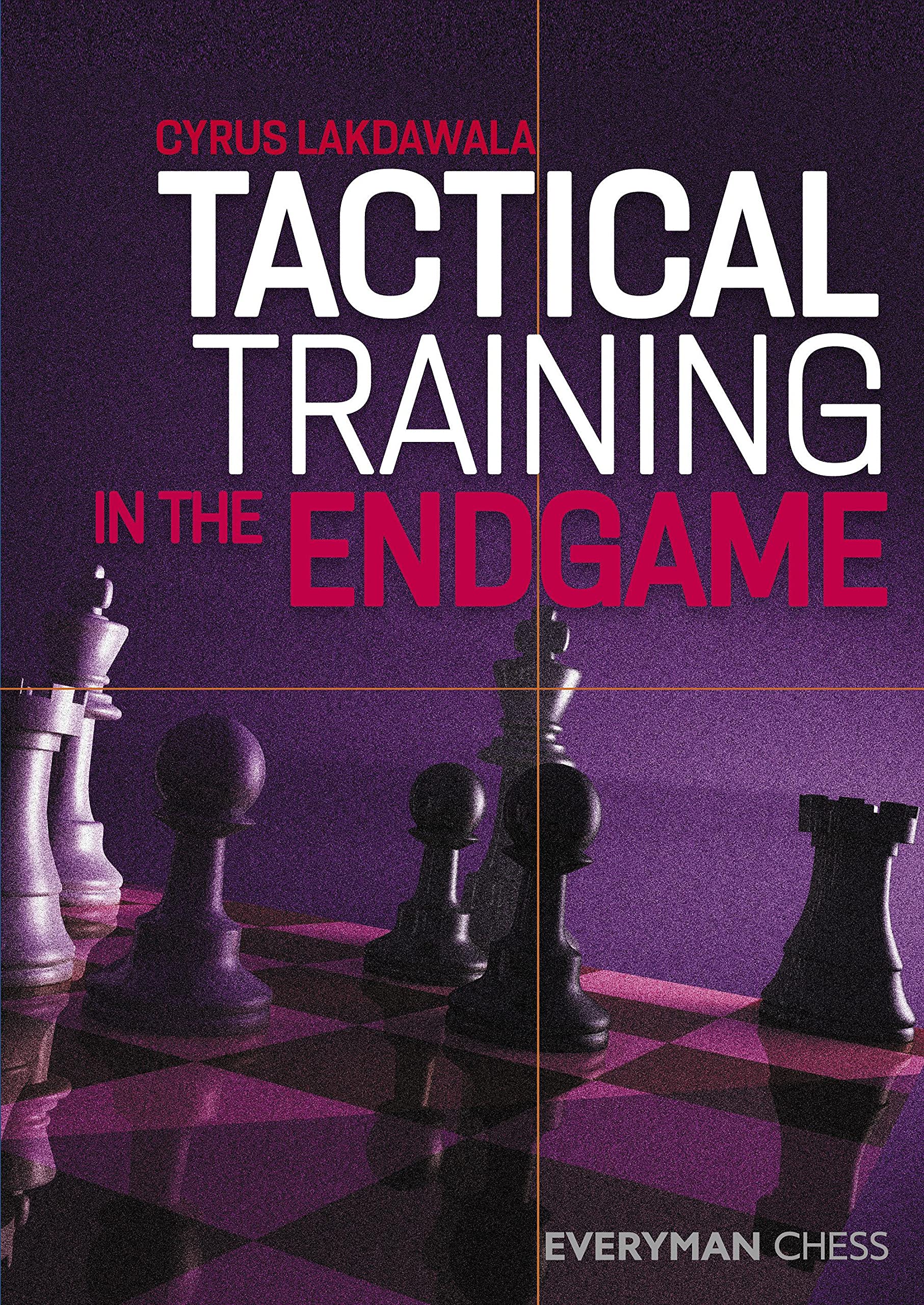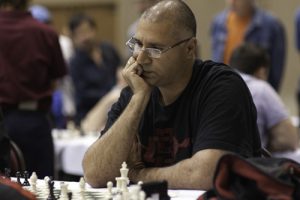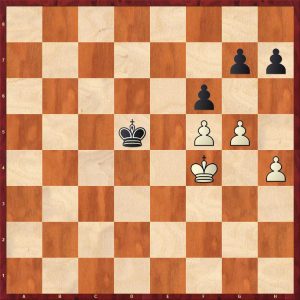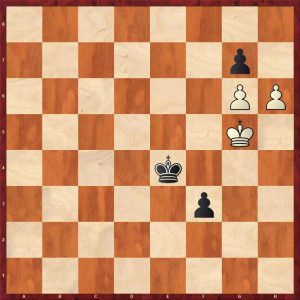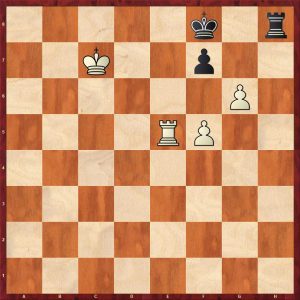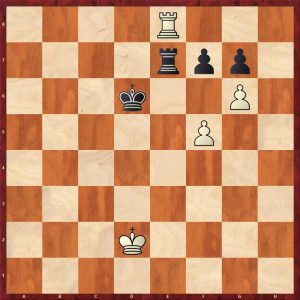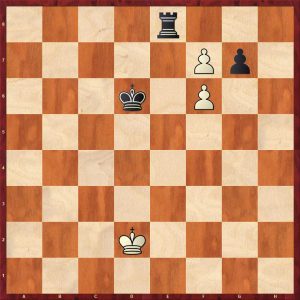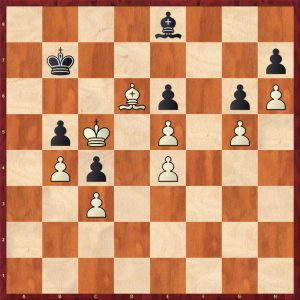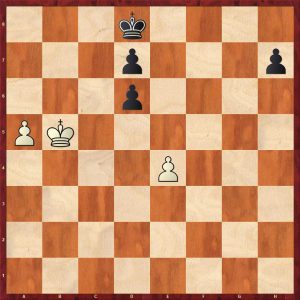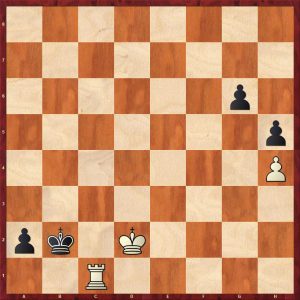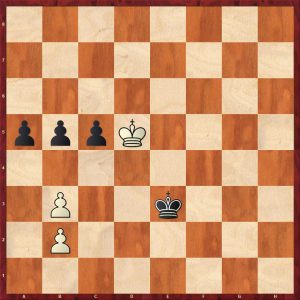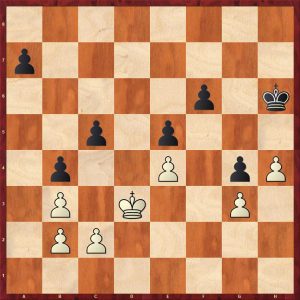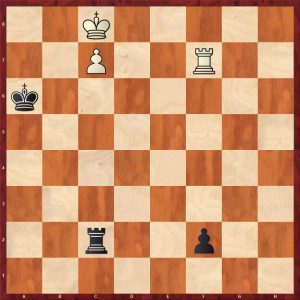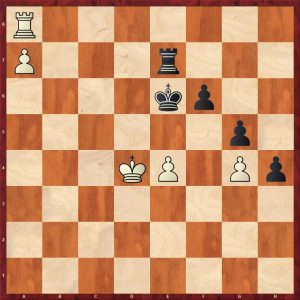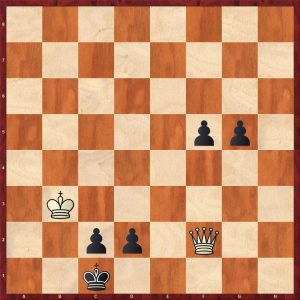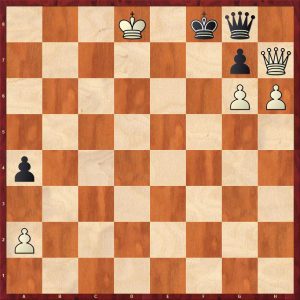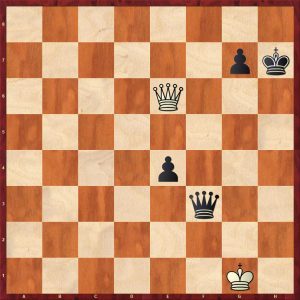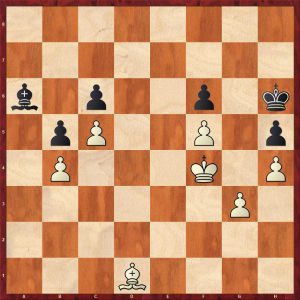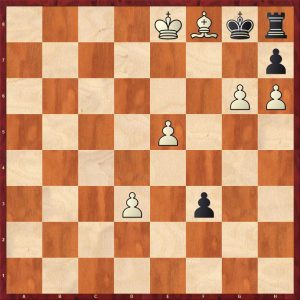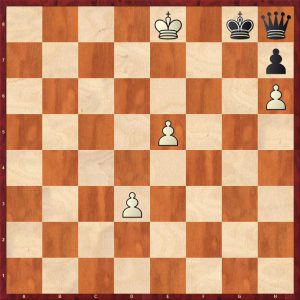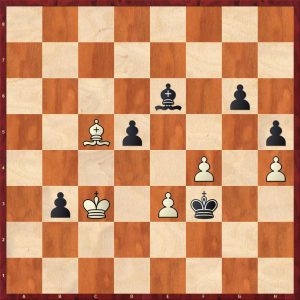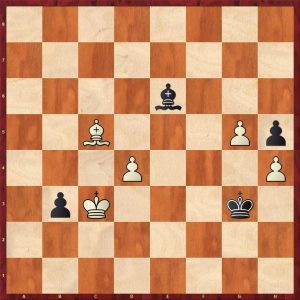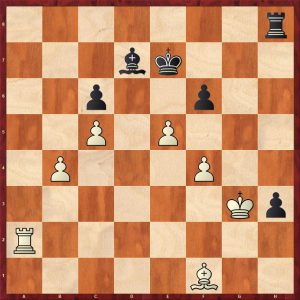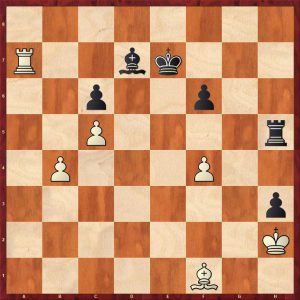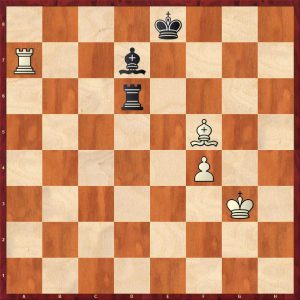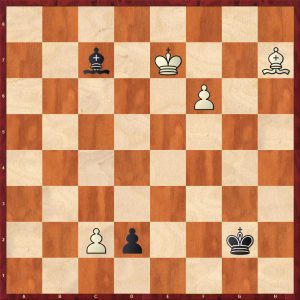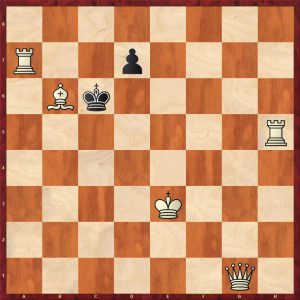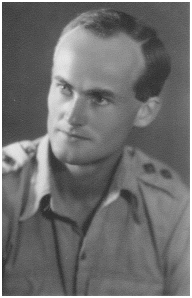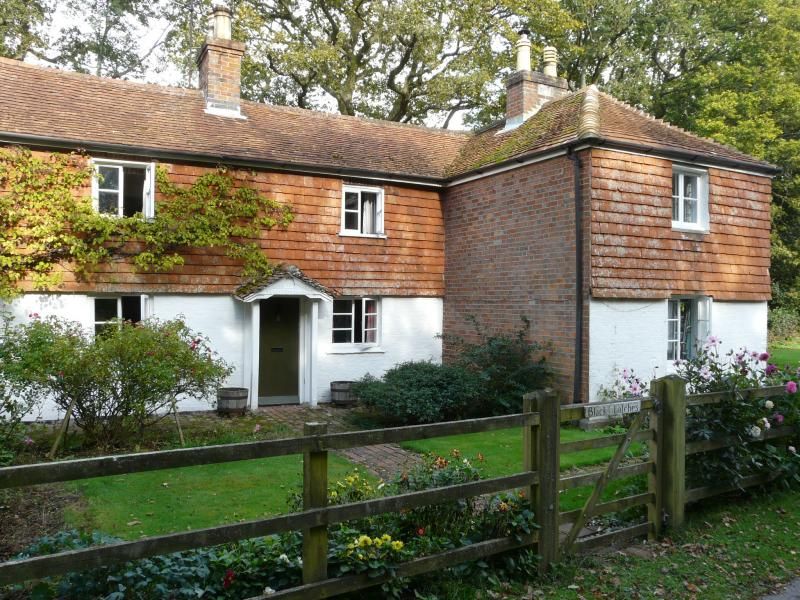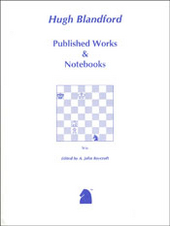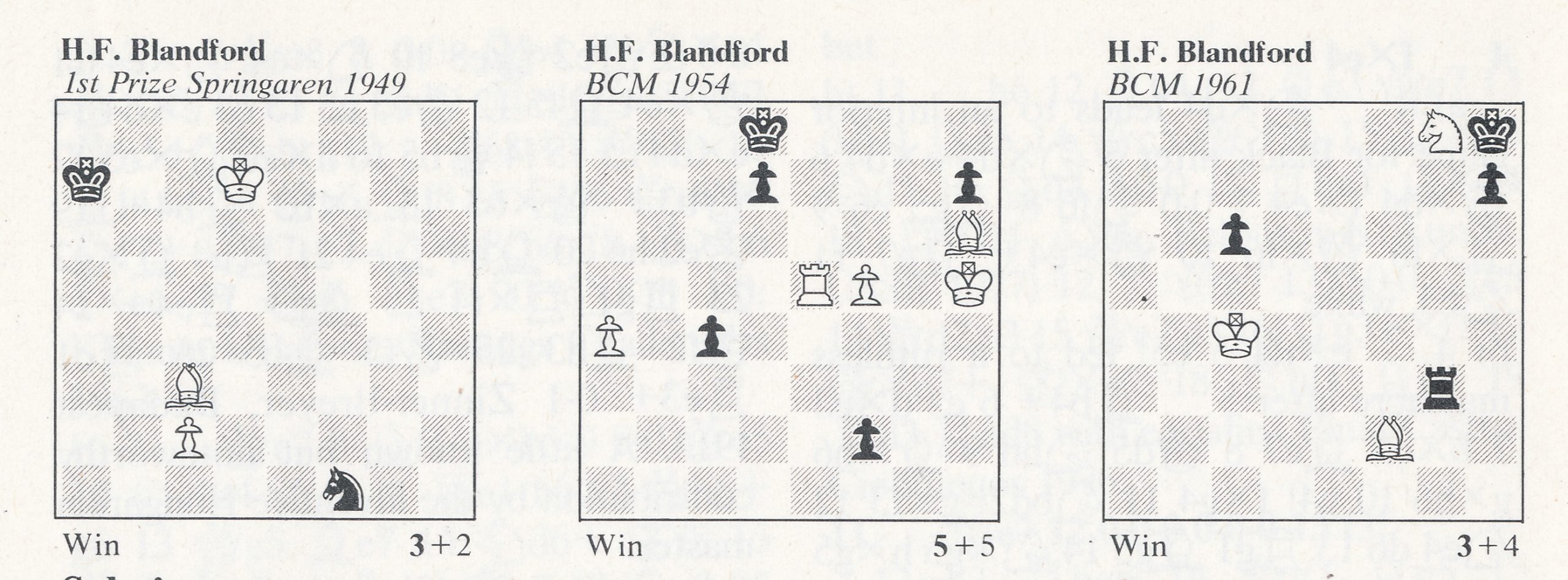The Art of the Endgame
My Journeys in the Magical World of Endgame Studies
Revised Edition – with 14 New Studies
by Jan Timman
From the publisher, New in Chess:
“All through his career Jan Timman has been captivated by the mystery and splendour of endgame studies. Even during his most successful and busy years as a world-class player, Timman continued to compose studies and admire those of others. For him, there has never been any doubt that his journeys in this magical world helped him to grow as a player.
In this fascinating book, first published in 2011, Timman has collected studies by other composers and explains in his lucid style how they inspired him to create dozens of brand-new studies.
Timman has revised the book for this new edition. With the help of engines, Timman discovered that a few studies needed to be corrected or had alternative solutions. He removed six studies and replaced another six with better versions. And fourteen new studies have been added, two of which are published here for the first time.”
About the Author, Jan Timman:
“Jan Timman is a former world championship candidate who rose to number two on the FIDE world rankings. He is the author of several highly acclaimed bestsellers, such as Timman’s Titans and Max Euwe’s Best Games. He was awarded the title of FIDE Master of Composition in 2022.”
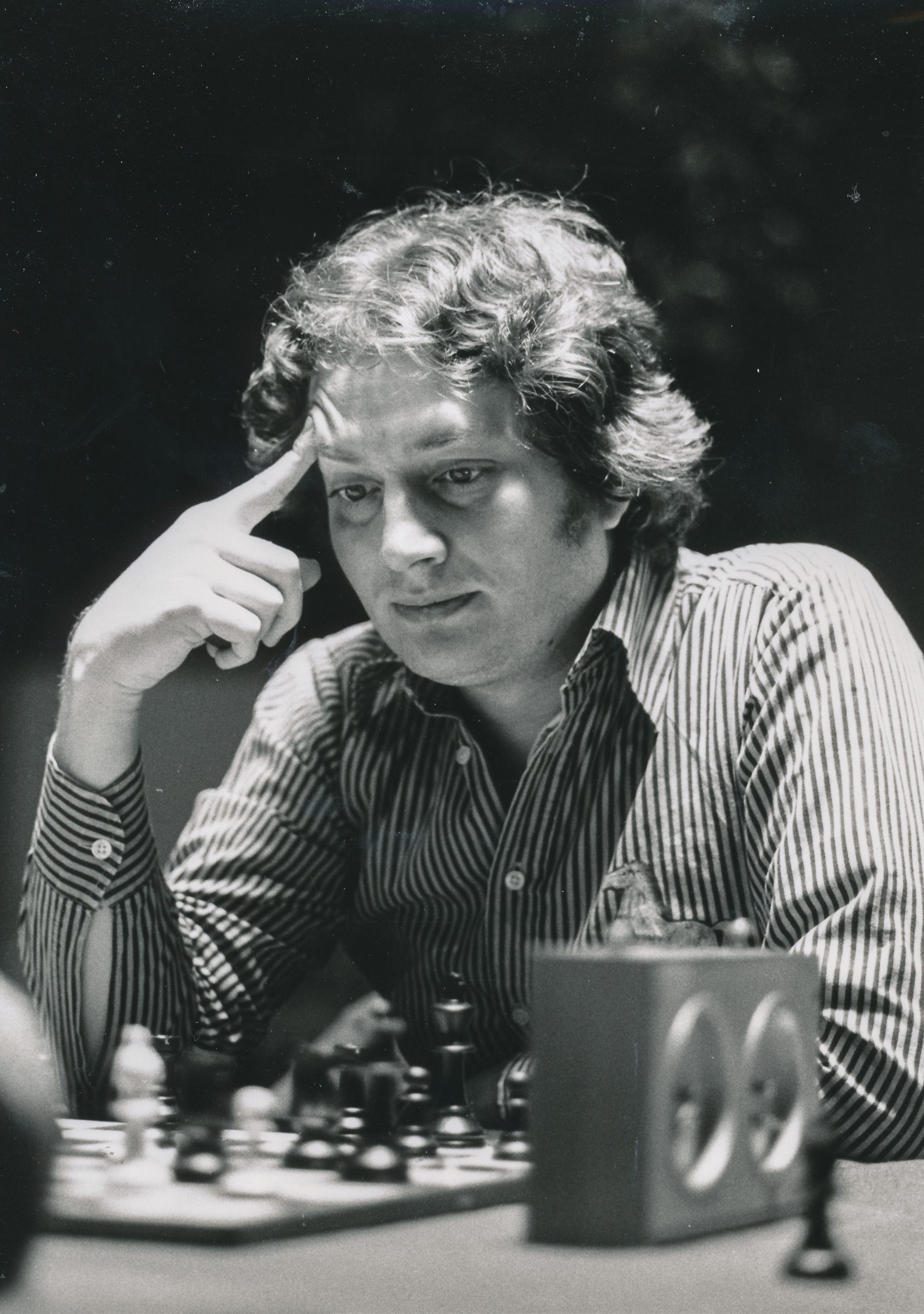
This book is a gem and I do remember perusing the first edition at a bookstall a while back, now I have a copy of the second edition.
There is no doubt that familiarity with ideas from endgame studies improves a player’s overall chess ability and imagination.
The reviewer was introduced to endgame studies at a tournament in London when he was junior: I was having lunch in the analysis room, when an older gentlemen showed some Harold Lommer studies involving knight promotions which got me hooked. The acquisition of Test Tube Chess by John Roycroft soon followed.
Jan Timman’s book has a variety of positions some of which are really “game like” whilst others are artistic beauties involving for example multiple promotions.
The book is divided into fourteen themed chapters viz:
Chapter 1: Miniature studies
Chapter 2: Rook versus bishop
Chapter 3: Preventing pawn promotion
Chapter 4: Various promotion combinations
Chapter 5: Knight promotions
Chapter 6: Bishop promotions
Chapter 7: Mating patterns
Chapter 8: Stalemate patterns
Chapter 9: Mutual zugzwang
Chapter 10: Building a fortress
Chapter 11: Systematic manoeuvres
Chapter 12: The disappearing trick
Chapter 13: Three themes
Chapter 14: Various endgame studies
The reviewer will show a variety of positions from various subsections.
Chapter 1: Miniature studies
These are positions with no more than seven pieces. This one is particularly beautiful with a mutual zugzwang.
Position 1
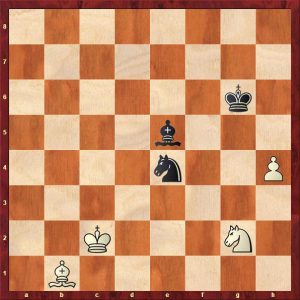
White is a pawn up with black’s king close to the passed pawn, so white needs something special here.
1.Kd1 pins the knight forcing 1…Kf5 2.Ke2 threatening to win the knight. Black bishop’s impedes his king, so he goes after the h-pawn with 2…Bf6 3.Kf3 Bxh4
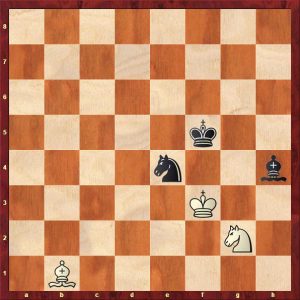
If white takes the bishop 4.Nxh4+ Kg5 attacking the knight saves black. So 4.Bxe4+ Kg5 5.Bd5!Kh5 6.Bf7+ Kg5 7.Be8
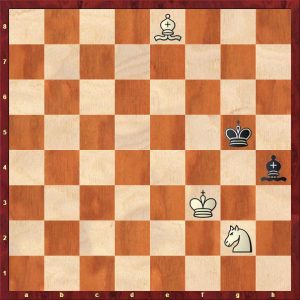
Black is zugzwang and loses the bishop and the game. Note this is a position of mutual zugzwang as white has no good waiting move and cannot win with the move! Very pretty.
Chapter 2: Rook versus bishop
This is the most practical chapter with studies in the complex endgame of R+P v B+P.
Position 18
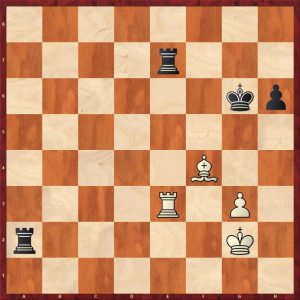
This is a celebrated position where Reshevsky played 53.Kf3? with Fischer missing a clear win by exchanging rooks and occupying g4 with his king. Instead Fischer kept the rooks on. White draws with 53.Kh3!
This study was created to show this:
Position 19
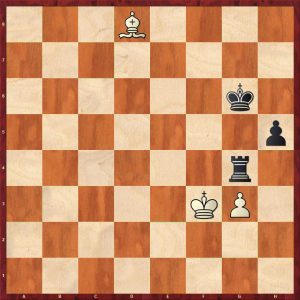
1.Kg2! Kf5 2.Kh3 Rc4 3.Be7! the only move 3…Rc1 4.Bf8! (The bishop hides itself to prevent a rook check followed by attacking the bishop to allow black to get in Kg4) 4…Rb1 5. Bg7 or 5.Bh6 draws
Chapter 3: Preventing pawn promotion
This is a famous promotion combination from a game which resembles the elegance of a study:
Position 44
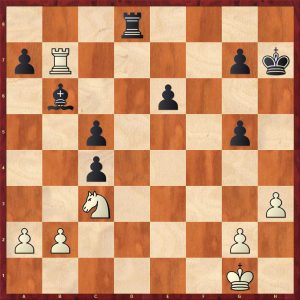
Black played 30…Rd2 31.Na4 (31.a4 was better) 31…Rxb2! 32.Nxb2 c3 33.Rxb6 c4!! 34.Rb4 a5!! winning
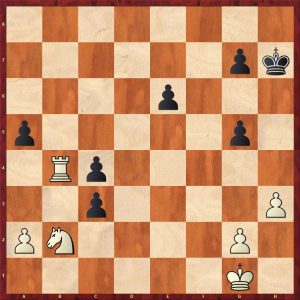
White cannot prevent the coronation of a new queen.
The great composer, Pogosyants composed a study with a very similar theme:
Position 46
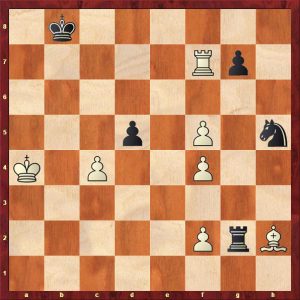
The solution is 1.Bg3 dxc4 2.Rxg7! Nxg7 3.f6 Rxg3 4.f5!! Rg5 5.f4! Nxf5 6.f7 wins
Chapter 4: Various promotion combinations
Position 69
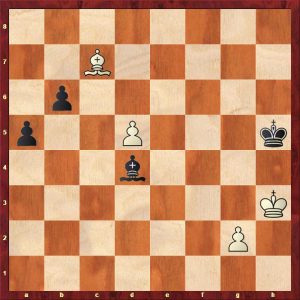
A game like position. 1.d6 Be5 2.Bb8 threatening d7 winning the bishop, so 2…Bf6 3.d7 Bd8 apparently saving the bishop, but 4.Bg3! a4 5.Bh4! Bxh4 6.g4+ and wins
Chapter 5: Knight promotions
Here is a superb Harold Lommer study with multiple promotions:
Position 96
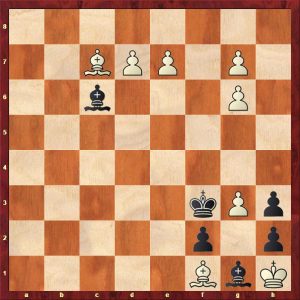
White is threatened with a brutal discovered mate by the black monarch. So 1.d8N Bd5 2.g8B!! (2.g8Q allows black a brilliant defence 2…Ke3+ 3.Qxd5 stalemate!) 2… Be4 3.e8R!! (3.e8Q allows another fantastic defence 3…Kg3+ 4.Qxe4 stalemate!) and wins
A brilliant study has with stunning counterplay.
Position 97 shows a famous Lommer involving 5 knight promotions, but unfortunately after the fourth promotion, there is alternative prosaic win promoting to a queen.
Chapter 6: Bishop promotions
Position 112
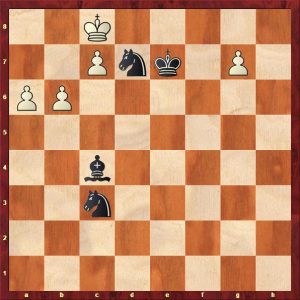
White has an army of far advanced pawns against 3 minor pieces and a well placed black king.
1.a7 Ba6+ 2.b7 Ne4 threatening Nd6# 3.g8N+ Ke8 4.Nf6+
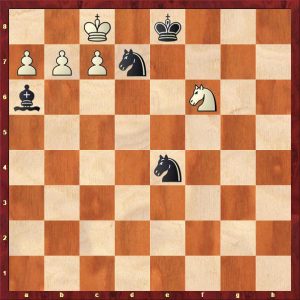
If black plays 4…Ndxf6 5.Kb8 gets the king out of the mating trap, so 4…Nexf6 5.a8B!! (5.a8=Q? Nd5 followed by Ne7#)
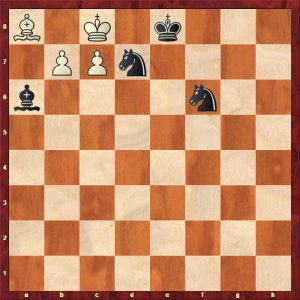
White is attempting a self stalemate, so black must release this and rearrange his pieces. 5…Ne5 (5…Bf1 6.b8N! draws) 6.Kb8 Nc6+ 7.Kc8 Bf1 threatening Bh3# 8.b8R!! (8.b8Q? Ba6+ 9.Qb7 Ne4 10.Qxa6 Nd6#, or 8.b8N? Ne7+ 9.Kb7 Bg2+ 10.Ka7 Nc8+ wins the bishop on a8 and the game)
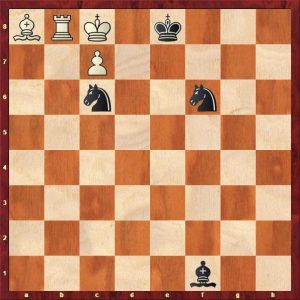
8…Ba6+ 9.Rb7! with a draw
Scintillating promotion play.
Position 124
This is a creation of genius and very amusing.
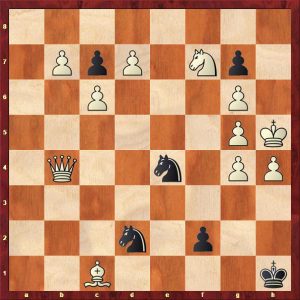
The great Troitzky is involved here. Black threatens a brutal Ng3 mate. 1.Qc3!! (Threatening the key g7 pawn, 1.Qa3? is met by f1N reinforcing the threat on g3 winning for black) 1…Nxc3 2.d8B!! (Not 2.d8Q? Nde4 3.Qxc7 f1N 4.Bf4 Ne2 followed by sacrificing all the knights ending with Qxg3 stalemate) 2…Ne2 3.Bxc7 f1N 4.b8B!! (4.b8Q allows black to sacrifice all the knights on g3 ending with Qg3 stalemate) 4…Ne4 5.B1f4 winning as the three white bishops control the three knights.
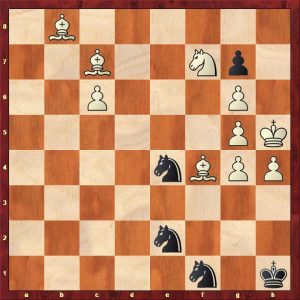
Who says there is no humour in chess?
Chapter 7: Mating patterns
Here is an elegant study by the author, Jan Timman:
Position 163
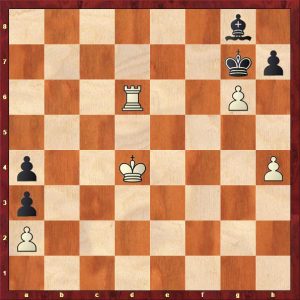
1.h5 preventing Bxa2 as Rd7+ would win easily 1…Kh6 2.Rd8! Bxa2 3.Rh8! Bg8! great counterplay
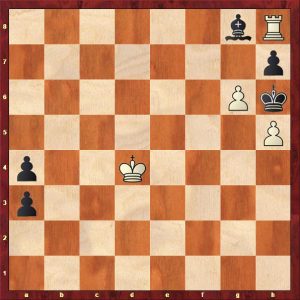
4.Kc3 a2 5.Kb2 a3+ 6.Ka1 Kg7 7.h6+
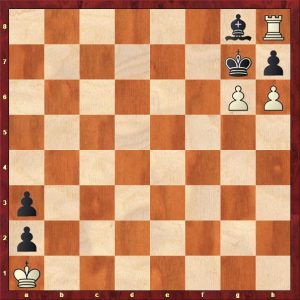
7…Kxh8 8.g7 mate
Chapter 8: Stalemate patterns
Position 167
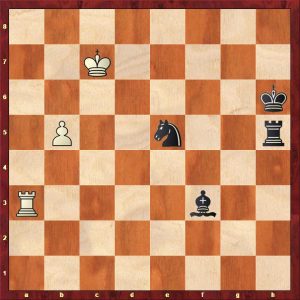
Stalemate looks unlikely here. 1.b6 must be played as white is two pieces down 1…Rf5 2.b7! Rf7+ 3.Kd6 Nc4+ 4.Ke6 Bxb7 5.Rh3+ Kg7 6.Rf3+ Kf8
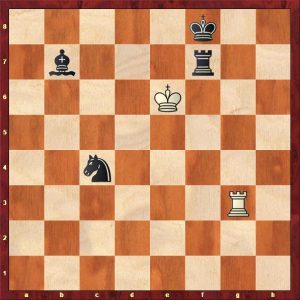
7.Rg8+! Kxg8 stalemate!
Chapter 9: Mutual Zugzwang
Position 189
Here is an entertaining position:
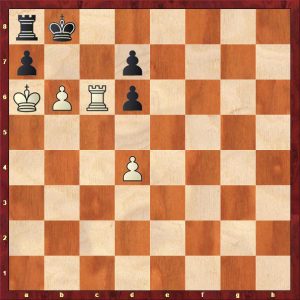
1.Rc8+ Kxc8 2.b7+ Kb8 3.d5 Kc7
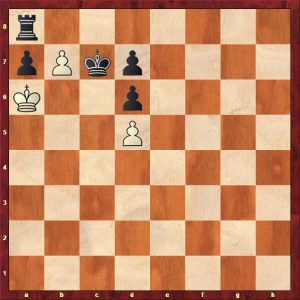
Now only 4.bxa8B! Kb8 5.Bb7 wins with a position of mutual zugzwang
Chapter 10: Building a fortress
Position 203
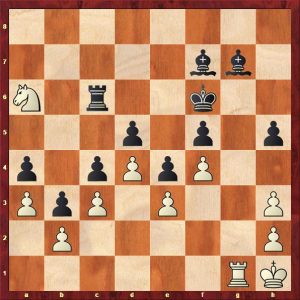
The elderly former World Champion, Smyslov, composed this amusing study in his eighties. 1.Nb8 Rd6 2.Nd7+! Rxd7 3.Rxg7! Kxg7 4.h4
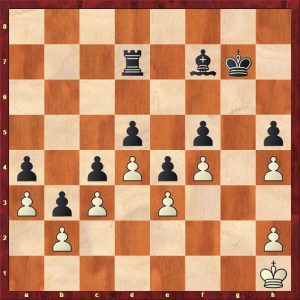
After 4…Rd6 5.Kg2 Rg6+ 6.Kh3! black has to move the rook off the g-file to avoid stalemate, so white draws!
Chapter 11: Systematic manoeuvres
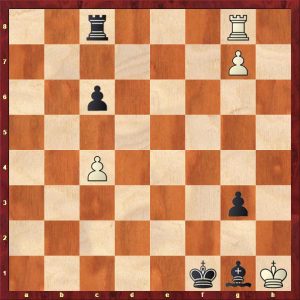
The reviewer assumes this is the Mitrofanov of Qg5!! fame.
White plays 1.Rf8+ Bf2 2.g8Q Rxf8 3.c5!
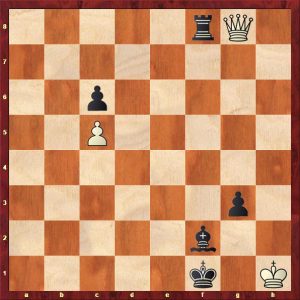
3…Rf7 4.Qg7! Rf6 5.Qg6! Rf5 7.Qg5! Rf4 8.Qg4! Rxf4 stalemate
Chapter 12: The disappearing trick
The disappearing trick is a kind of systematic manoeuvre whereby white plays to achieve a particular position without a certain white piece. This is demonstrated below with a neat study.
Position 260
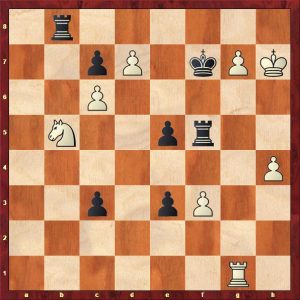
1.Nd6+ (to create two dangerous passed pawns) cxd6 2.Kh6 Rf6+ 3.Kh5 Rf5+ 4.Kg4 Rf4+ 5.Kh3! Rxf3+
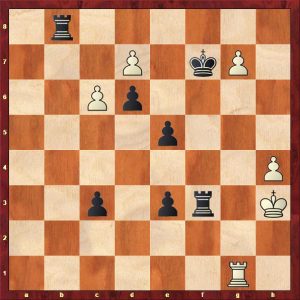
Now the king sneaks back minus the f-pawn.
6.Kg4 Rf4+ 7.Kh5 Rf5+ 8.Kh6 Rf6+ 9.Kh7 Rf5
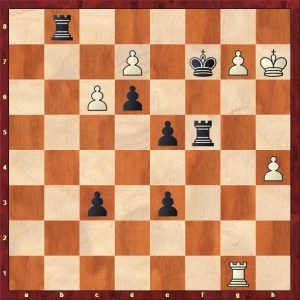
10.Rf1! (The point of removing the f-pawn) Rxf1 11.c7 Rf5 12.d8N+ Rxd8 13.cxd8N+
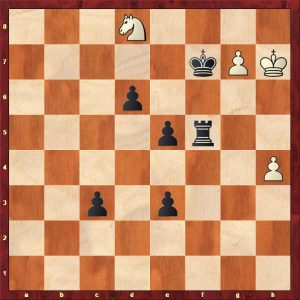
13…Kf6 (otherwise white promotes to a queen) 14.g8N mate Brilliant!
The last two chapters are short with some pretty positions.
I heartily recommend this labour of love to the endgame study which will give the reader many pleasurable hours.

FM Richard Webb, Basingstoke, Hampshire, 15th June 2024
Book Details :
- Hardcover : 248 pages
- Publisher:New in Chess (31 Aug. 2023)
- Language: English
- ISBN-10:9083328414
- ISBN-13: 978-9083328416
- Product Dimensions: 7.3 x 2 x 23.7 cm
Official web site of New in Chess
